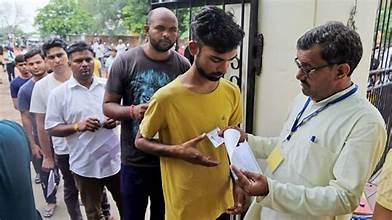The Background and Initial Encounter
The story of the two MBBS students who crossed paths for NEET impersonation begins with their individual academic and personal journeys. Both students, hailing from different parts of the country, were driven by a shared ambition to excel in the medical field. Growing up in competitive environments, they faced immense pressure from family and society to secure a top rank in the National Eligibility cum Entrance Test (NEET).
Student A, a diligent and determined individual, had consistently been a top performer in his school years. Despite his dedication, he struggled to balance the intense preparation required for NEET with the expectations of his family, who had high hopes for his future. The fear of failure and the desire to meet these expectations began to weigh heavily on him.
On the other hand, Student B had a different trajectory. Although she was equally ambitious, her academic journey was marked by several setbacks. Repeated attempts at NEET without the desired results left her feeling disheartened and desperate. The cumulative pressure from her family, coupled with societal expectations, made her increasingly anxious about her future in medicine.
Their paths crossed during a preparatory course for NEET, where they found themselves in a similar predicament. Mutual acquaintances introduced them, and they quickly bonded over their shared struggles and aspirations. It was during these interactions that they began to discuss the possibility of impersonation as a means to secure a high rank in NEET. The idea, though fraught with ethical concerns, seemed like a viable solution to their mounting pressures.
Several factors contributed to their decision to engage in NEET impersonation. The fear of disappointing their families, the stigma of repeated failures, and the intense competition in the medical field created a perfect storm of desperation. The students rationalized their actions as a temporary means to an end, believing that securing admission to a prestigious medical college would ultimately justify their unethical choices.
Thus, their initial encounter, born out of a mutual acquaintance and shared hardships, set the stage for their involvement in NEET impersonation, highlighting the complex interplay of personal, academic, and societal pressures that can drive individuals to consider such actions.
The Impersonation Scheme and Its Consequences
In a meticulously planned scheme, two MBBS students devised an intricate plan to impersonate candidates in the National Eligibility cum Entrance Test (NEET). The students, who were well-versed in the examination process, exploited systemic loopholes to carry out their deceit. One student assumed the role of the impersonator, while the other facilitated logistical support, such as acquiring fake identification documents and coordinating entry into the examination center.
The plan hinged on the impersonator’s ability to convincingly mimic the registered candidate’s appearance. To this end, they employed sophisticated methods, including digital manipulation of photos for ID cards and the use of high-quality forged documents. Additionally, the duo took advantage of the crowded and often chaotic environment of examination centers to avoid detection. They timed their entry and exit to coincide with peak periods, thereby blending in with the larger group of genuine candidates.
Read More : MBBS Students
Despite their meticulous planning, the scheme eventually unraveled. Anomalies in the examination records triggered scrutiny from the authorities. A routine audit revealed discrepancies in the candidate’s photographs and signatures, leading to a detailed investigation. Upon closer inspection, the forged documents were identified, and the students were apprehended. Consequently, both students faced severe legal consequences, including charges of fraud and academic misconduct.
The ramifications of their actions extended beyond legal penalties. Both students were expelled from their respective medical colleges, thereby derailing their academic and professional aspirations. The scandal cast a shadow over their future endeavors, making it exceedingly difficult for them to regain trust within the medical community.
This incident also had broader implications for the MBBS Students examination system. It underscored the need for enhanced security measures and rigorous verification processes. The medical community, already under immense pressure to uphold ethical standards, faced increased scrutiny. The scandal prompted educational authorities to implement stricter identity verification protocols to safeguard the integrity of the examination process.





